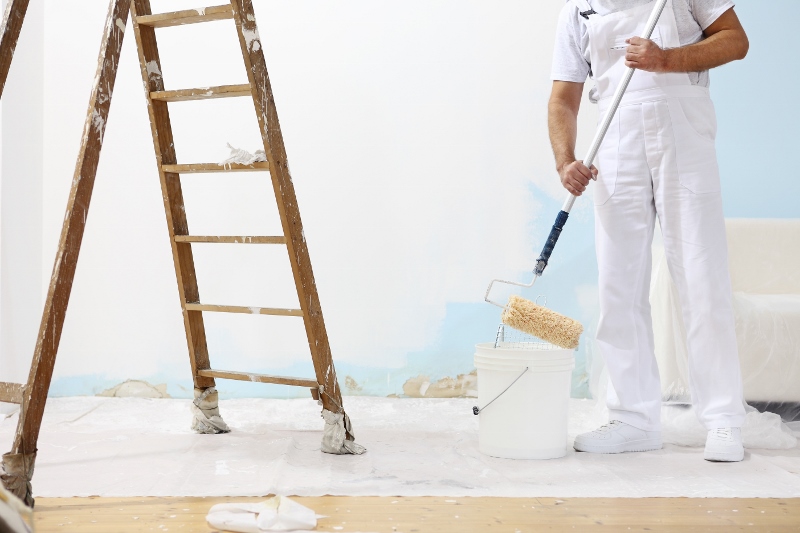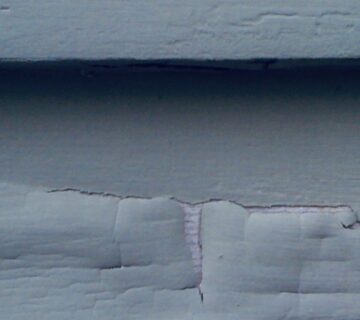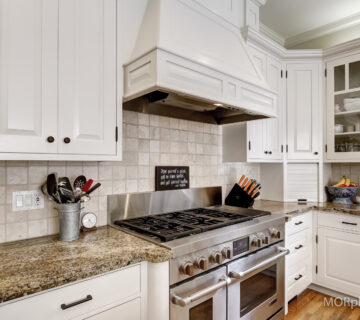When it comes to giving your home a fresh look with a new coat of exterior paint, the application method you choose can greatly impact the quality and longevity of the results. In this post, we’ll delve into common methods, revealing how Sisu Painting ensures top-quality outcomes for your home’s exterior. We’ll also emphasize the importance of tailoring your painting process to various siding materials, safeguarding your investment in a timeless facade. Different surfaces and materials require distinct approaches to ensure the paint adheres properly and lasts for years. By understanding the characteristics of each material, Sisu Painting can apply the most effective techniques for your home.
Brushing and Rolling: Precision and Coverage
One traditional approach to exterior painting is brushing and rolling. This manual method entails meticulously applying two coats to meet manufacturer specifications. While it demands time and labor, it offers distinct advantages, especially for certain siding surfaces like cedar shakes or T-111. This technique allows for thorough penetration of the paint into the surface, which is essential for protection and durability. The careful application ensures a protective layer that guards against weather and wear.
The merits of brushing and rolling include:
- Control: Painters maintain precision for an even coat and desired thickness.
- Coverage: This method ensures comprehensive coverage, enhancing your home’s exterior.
- Suitability: Ideal for “rough” siding surfaces, like cedar shakes or T-111, where precision is paramount.
- Longevity: Properly applied, this method can extend the life of the paint job.
- Aesthetics: Brushing and rolling can enhance the appearance by allowing for better control over the finish.
However, for homes with smooth, non-porous hardy plank construction, back brushing or rolling may not always be imperative. Nevertheless, eaves, corner boards, and trim nearly always necessitate two coats with back-brushing or rolling to achieve an even, appealing paint application. These detailed efforts help ensure that even the most challenging areas receive adequate attention and treatment, contributing to the overall beauty and longevity of the finish.
Spraying: Speed and Uniformity
Another prevalent method for exterior painting involves utilizing airless sprayers. This technique offers the advantage of uniform paint application in terms of thickness and relatively rapid drying times. Yet, it’s vital to factor in the siding material before opting for spraying, as it might not suit all surfaces. Spraying is highly efficient and can cover large areas quickly, making it ideal for expansive surfaces with fewer textural complications. However, careful preparation is necessary to ensure that the surrounding areas are protected from overspray.
The perks of spraying encompass:
- Uniformity: Airless sprayers deliver even paint application with consistent thickness.
- Efficiency: Speedier drying times allow for prompt project completion.
- Reach: Sprayers can easily access hard-to-reach areas without the need for extensive scaffolding.
- Volume: Large volumes of paint can be applied uniformly in a shorter period.
- Versatility: Sprayers can be adjusted to suit different paint types and viscosities.
However, when confronted with rough siding surfaces like cedar or T-111, the airless spraying method may not be the optimal choice. Paint may struggle to absorb into the siding, resulting in uneven coverage and eventual paint failure. In such cases, a combination of spraying followed by back brushing or rolling ensures that the paint fills the pores and crevices of the surface for a uniform and durable finish.
Sisu Painting: A Blend of Excellence
At Sisu Painting, we recognize the significance of achieving both precision and efficiency in exterior paint applications. To ensure top-tier results for your home, we employ a distinctive approach that melds the best of both worlds—brushing, rolling, and spraying techniques. Our experienced painters understand the nuances of each technique and how to effectively combine them to suit your home’s specific needs.
Our process unfolds as follows:
- First Coat: Our adept painters apply the initial coat of exterior paint using an airless sprayer, ensuring uniform coverage in a swift manner.
- Back-Brushing or Back-Rolling: Immediately following the spray, we meticulously apply back-brushing or back-rolling, ensuring even paint incorporation into the siding surface.
- Top Coat: We culminate the process with a top coat, guaranteeing a flawless, enduring paint application.
- Attention to Detail: Each step is performed with careful attention to detail to ensure no spots are missed.
- Quality Checks: We conduct thorough quality checks throughout the process to ensure the finish meets our high standards.
This fusion of methods yields the most appealing and long-lasting paint results for your home’s exterior. Our approach guarantees that your investment not only radiates beauty but also endures the test of time. By integrating these various methods, Sisu Painting not only maximizes the aesthetic appeal but also the durability of your paint job.
Final Thoughts
Selecting the appropriate exterior paint application method is pivotal for attaining optimal results. While brushing and rolling offer precision and coverage, airless spraying delivers speed and uniformity. At Sisu Painting, we’ve mastered the art of blending these techniques to furnish you with a flawless, enduring exterior paint job. Revel in the sunshine, and entrust Sisu Painting with all your exterior painting requirements. By choosing us, you ensure that every stroke of the brush and every spray of paint contributes to a superior and lasting finish.





No comment